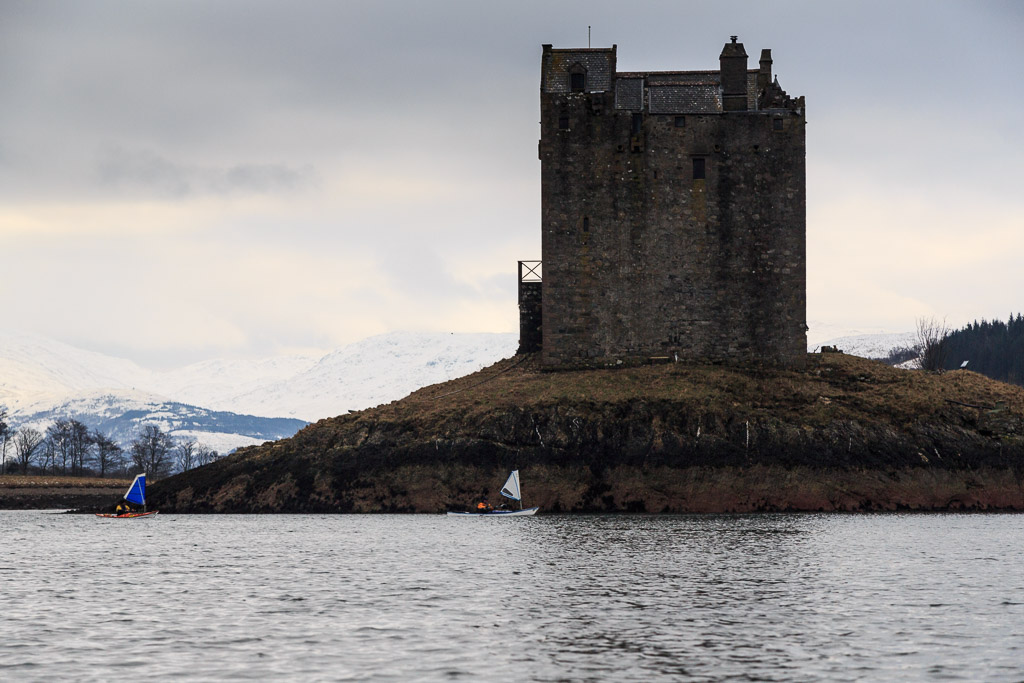We launched beside the Pier House Hotel. Their Grand Seafood platter for two sells for and eye and mouth watering £85. We decided to dine alfresco rather than order the Holy Grail of sea food platters.
This old boat on the shore has seen better days.
Port Appin was under thick grey cloud but both to the north and south there was a hint of winter sunshine.
The south going ebb had already started so we decided to paddle north to explore while there was still water,
Our first destination was the Sgeir Bhuidhe light. This is a modern recreation of the original late 19th century light. In 2001 it was planned to replace the old light with a modern rectangular box. Locals were upset that their local Holy Grail of lighthouses would be no more and the old light was painted to look like Mr Blobby in protest. Sense prevailed and this modern light is a passable copy of the...
...original, which certainly looks a lot better than a rectangular box. The original light's lantern house is now a museum in the village.
A little SE breeze got up which helped with the paddle against the ebb tide which was now poring out of ...
...Loch Laich. Standing on an islet in the mouth of the Loch, Castle Stalker enjoyed a near impregnable position.The Gaelic name was Caisteal na Stalcaire. The Gaelic language is very economical with words and so each can have several meanings. Stalcaire means:
A One that hobbles or walks awkwardly.
B Dresser of hooks.
C Starch.
D Blockhead.
E Hunter, fowler, deer-stalker.
F Gazer, starer.
G Arrow-maker.
H Pacing-horse.
I Bully.
J Robust fellow.
K None of the above.
So take your pick!
Castle Stalker was built by the Stewarts of Appin in the 1440s.
Over the years it changed hands with the Campbells several times and on one occasion changed ownership as a result of a bet. Perhaps Castle Blockhead is the right interpretation!
It was restored by a descendant of the Stewarts between 1965 and 1975. It achieved more recent fame as "Castle Aargh" in Monty Python and the Holy Grail.
"Here may be found the last words of Joseph of Arimathea:"
"'He who is valiant and pure of spirit..may find the Holy Grail.in the Castle of Aaargh."'
The Stalker logo is made from an old fisherman's anchor and chain.
We made our way up steep slippy rocks to...
...the grass below the castle's two entrance doors.
This is the view from the castle. In 1745 it was held by the Campbells and besieged by the Stewarts. The attackers could not get their cannon close enough and the cannon balls bounced...
...harmlessly off the walls. We made our way up to the main entrance to the castle living accommodation. There is a well worn coat of arms above the door. Whether this was weather worn or scrubbed away by successive owners is not known.
This is not the original door but is well in keeping with the castle.
The ground floor door gives access to three cellars and a prison cell.
Not having found the Holy Grail, we decided to set off from...
...Castle Stalker and continue our voyage...
...the Sound of Shuna to Shuna Island.



























